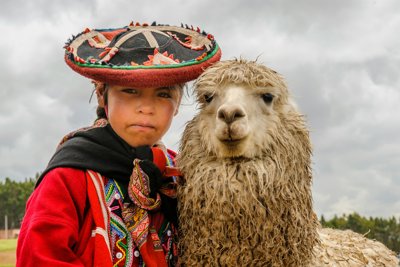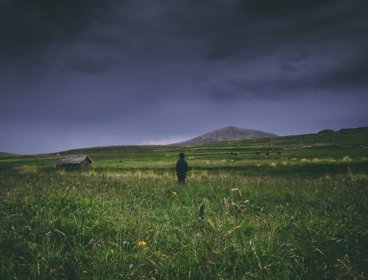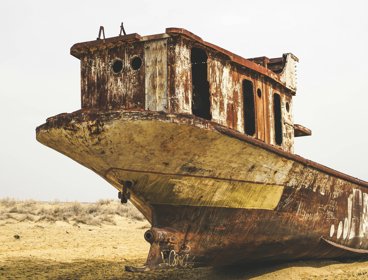February 2015
Peru is a developing country that forms part of the western coast of South America. It is considered to be one of the poorer South American nations with a GDP per capita of US$6662 compared to US$11,208 of its neighbour, Brazil (World Bank, 2014). Like all the countries on this coastline, it is regularly affected by El Niño and La Niña currents which can particularly create problems for the Peruvians who use the sea as their main or only source of income. There is evidence of El Niño events in Peru as far back as thirteen thousand years ago and it is thought that one reason for the chosen altitude of the Inca settlements in the 1400s was to avoid the flooding of the plains and deserts that El Niño years can bring.
How do ‘normal’ ocean currents affect Peru?
In ‘normal years’, trade winds that flow over the surface of the Pacific Ocean flow west, from Peru to the eastern coasts of Papua New Guinea and the Solomon Islands. By the time these winds reach their destination, they have been warmed and at the Asian coast rise to create a low pressure region. As these winds return to South America at higher altitudes they cool and stable air drops to the ocean surface again at Peru, creating a region of high pressure and very dry conditions; conditions which have formed the Atacama Desert over time. This cycle continues and creates a circulation cell (in this case a Walker cell) which in turn affects the movement of the ocean currents.
The Humboldt Current flows in a northerly direction up the South American coast, replacing the warm waters that travel westwards with the trade winds. The Humboldt Current is a body of water far cooler than that which it is replacing as it stems from Antarctica. It brings with it nutrient rich waters which feed plankton and allow them to grow prolifically and these plankton in turn feed the fish that inhabit the sea off the Peruvian coast, in particular the Peruvian Anchoveta, a small member of the anchovy family which is used extensively for fish meal production.
What changes during an El Niño year?
In an El Niño year, the whole weather system reverses and the dry high pressure system that Peruvians are used to changes to a tropical, rainy, low pressure scheme. The cool Humboldt Current coming up to Peru from Antarctica is overcome by the warm ocean current heading eastwards across the Pacific Ocean from Papua New Guinea, and the sea off the Peruvian coast can be between 4°C and 8°C warmer than normal. The fish that normally flourish in cool waters reproduce in lower numbers as the warmer water contains less oxygen, and those fish that remain tend to move offshore, and out of reach of most fishermen’s range.
In addition to the fishing industry, El Niño brings at times torrential rain showers to agricultural land on the seaward side of the Andes, as well as higher than normal levels of snow melt, which can trigger land and mudslides.
What impact does this have on development issues in Peru?
More than a quarter of all Peruvians are employed in either agriculture or fishing industries for their main source of income (World Bank, 2011) and so a large part of the national economy is reliant on favourable climate conditions. During El Niño years the Peruvian economy loses up to five percent of its total income due to lost revenues as a result of lower fish landings and crop yields, a figure that is felt even more acutely by those who rely on these forms of employment most directly. In 1997, fishermen recorded an eighty percent drop in the level of Peruvian Anchoveta that they were landing (FAO Globefish, 2014), forcing many to seek alternative employment and never to return to the seas.
In even minor El Niño years, rivers swell with increased rain water and flooding is a regular occurrence. Water logged soils can devastate field systems in the long term and flooding can wash away irrigation systems that can take years to fully replace. Poor yields from the land and the sea can reduce export generated incomes (by sixty six percent in 1997-1998 according to a FAO report in 2014) but they also affect the domestic food market for staples such as rice and bananas. In the 1998 El Niño, the Piura River in the very north of Peru swelled by up to fifteen centimetres a day and when it burst its banks, killed thousands of livestock, as well as people’s homes. Food prices rise and malnutrition can be common in El Niño years, leading to stunted growth amongst children and increased vulnerability to illnesses (Wilson, 2014)
Floods also wash away roads that connect fishing and agricultural villages, as well as the bridges that make access to isolated areas possible. Whole villages in past El Niño events have been washed away, such as the village of San Bartolome which in 1982 sat at a confluence of the Rio Rimac until rain induced mudslides that year left it uninhabitable. During floods, drinking water can become more easily contaminated with pollutants and in very bad El Niño years whole regions can be cut off for months at a time.
New lakes have been known to form in the Sechura Desert in northern Peru. In 1998 so much water pooled in this area that a new three metre deep lake formed – the second largest in Peru at the time – and record levels of mosquitos and malaria were recorded.
In ‘normal’ years, guano is often harvested from seabirds’ habitats and sold as a base for fertilizer production. The seabirds, (who feed on the small fish that depend on the Humboldt Current) tend to flock to other areas in El Niño years, reducing the income that this industry can yield.
How might Peruvians manage the El Niño Southern Oscillation to minimise its impact?
The Peruvian government is already taking steps to regulate the about of fish being landed in ‘normal years’ in the hope that the effect of El Niño at other times will not be felt so acutely. However this is difficult to both enforce and justify with so many coastal Peruvians needing to land ever bigger catches to support their families. Since the 1997-1998 El Niño event, which in terms of losses was the biggest in recorded history, the United States National Oceanic and Atmospheric Administration have invested in monitoring equipment that tries to predict in which years El Niño is likely to happen and to what intensity.
Satellite data and is analysed alongside information from buoys in the Pacific Ocean and warnings are given to Peru (and indeed all El Niño affected countries) a few months in advance of extreme weather events. This has allowed farmers to adapt to climatic changes and for protective measures, such as storm drains and home reinforcements to be constructed. Warning systems allow farmers time to leave some of their land fallow so that in a flood event water can be directed there and stored away from more valuable crops. Areas that are normally too dry for cultivation can be seeded in advance of El Niño events to make the best use of the increased rainfall and fishermen can change their netting practices to target shellfish, and fish that flourish in warmer waters such as mahi-mahi and tuna.
While standards of prediction have increased considerably since 1997, not all Peruvians have the financial stability to choose what and when they plant in accordance with the predicted climate patterns. It is also true that monitoring and prediction are not yet at a scale at which it can help farmers and fishermen in small, individual localities, instead operating at a regional scale at best. For this reason, adaptation to changing climates brought on by El Niño is for the time being seen as far more favourable than mitigation, though as the intensity of climate change effects increases in all coastal regions, this may change in the future.
References
FAO Globefish (2014) Fishmeal March 2014
Wilson, C. (2014) Severe El Niño stunted Peruvian children’s height, New Scientist
World Bank (2011) Data Sets
Key Words
Circulation Cell
The circular movement of air between the upper and lower altitudes of the Earth.
El Niño Southern Oscillation
The movement between one form of localised climate conditions to another, normally creating extreme weather conditions for those living in coastal regions.
GDP (Gross Domestic Product)
The total value of goods and services produced in a country in one year.
Trade winds
The prevailing pattern of winds found closest to the Earth's surface.
Lesson Ideas
Using the information from the article about the process of El Niño, students can predict what would happen to other countries around the Pacific Ocean based on their geographical position. Students can then research the 1997-1998 El Niño phenomenon and see if their predictions are correct.
Students should consider why placing a limit on the amount of anchoveta caught might cause widespread problems, both for the local fishermen and Peru’s economy. Students could then suggest alternative management plans which can be ranked according to their consideration for society, the environment and the economy.
Starting with ‘warm water travels east in the Pacific’ and ending with ‘Carlos is unable to attend school’ students can draw a flow diagram with all the different stages in between to highlight the widespread impact of El Niño. There are a few different ways of getting between the two statements and stronger students might like to explore more than one.



